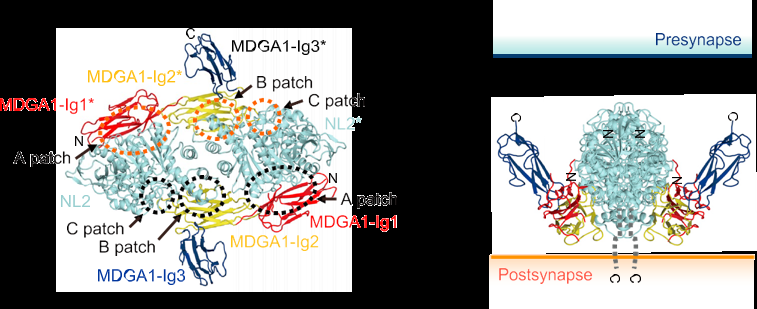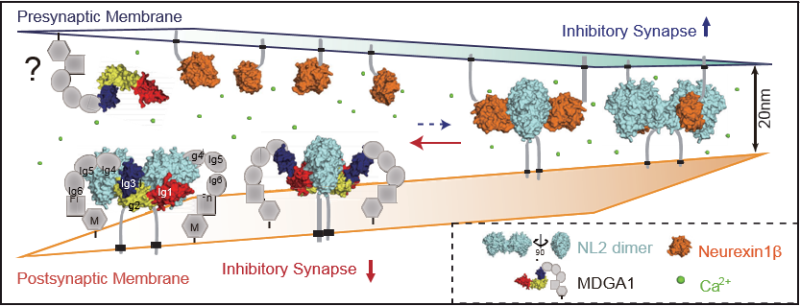Key synapse formation regulator identified

Professor Ko Jae-won at Korea Advanced Institute of Science and Technology (KAIST) has conducted a study of the three-dimensional structure of proteins that regulate neuronal cell connections for the first time, and has identified the control mechanisms of synapse formation.
The brain is made up of innumerable neurons. Neurotransmitters are secreted and absorbed at the synapse, the junction of the two neurons; the signals are transmitted and the brain functions properly. As the brain develops, efficient neurotransmission relies on a balance of excitatory synapses and inhibitory synapses created between the neurons. Excitatory synapses release neurotransmitters that excite neurons and synaptic inhibitors release neurotransmitters to inhibit nerve cell excitability. When the balance of the two synapses is broken, it is known that mental disorders such as autism, bipolar disorder and obsessive-compulsive disorder occur.
In 2013, Professor Thomas C. Sudhof of Stanford University discovered the neuroligin and neurexin proteins, important synaptic adhesion proteins that are important factors in synapse development and function maintenance. However, specific mechanisms have yet to be identified. Moreover, it is also known that the MDGA1 protein binds neuroligin-2 at the inhibitory synapses and interferes with the interaction of neuroligin and neurexin and stops inhibitory synapse development, but its mechanism is also unclear.

The research teams used protein crystallography to crystallize neuroligin-2 and MDGA1 protein complexes that are involved in inhibitory synapse development and observed the three-dimensional structure. The researchers have identified for the first time that the MDGA1 protein at the post-synapse interferes with the binding between neuroligin-2 and neurexin and prevents inhibitory synapse formation.
Based on the three-dimensional molecular structure, the researchers created mutations of core amino acids that play a pivotal role in the binding of neuroligin-2 and MDGA1. Through the neuron culture experiment, they verified that the protein interaction site is a critical functional region for the negative regulation of the synapse development process. In addition, the study has proved that MDGA1 can effectively control inhibitory synapse formation as the binding ability of MDGA1 is superior to neurexin while MDGA1 and neurexin can both competitively bind with neuroligin-2.

DGIST's Professor Jaewon Ko of the Department of Brain and Cognitive Sciences said, "We have found the mechanism of molecular regulation of MDGA1 protein, which is necessary for the balanced operation of excitatory and inhibitory synapses. We will continue working to identify the mechanisms of brain diseases caused by dysfunction of synaptic proteins and conduct researches to develop therapeutic drugs."
This study has been published in the online edition of Neuron, an international journal of neurobiology and the sister journal of Cell, on June 21.
More information: Jung A Kim et al, Structural Insights into Modulation of Neurexin-Neuroligin Trans -synaptic Adhesion by MDGA1/Neuroligin-2 Complex, Neuron (2017). DOI: 10.1016/j.neuron.2017.05.034




















